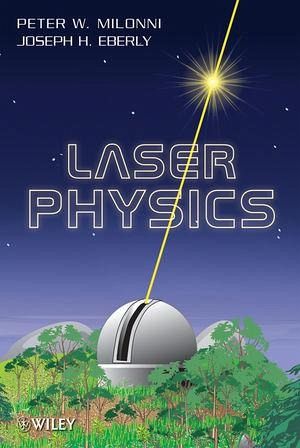Basic Laser Physics Pdf Ebook

Among the outstanding achievements of science and
engineering in the 20th century, the laser occupies by right a major
position. First lasers made in 1960 paved the way for the vehement
development of laser technology. Today, lasers and laser systems find
wide lise in many fields of science and engineering. They are employed
in communications systems, computers, navigation equipment, measuring
instruments, and in complicated technological processes. Biology,
medicine, and various chemical and physical investigations utilize
lasers to advantage.
Introduction to Laser Physics provides an introduction to the essential physics of quantum electronics and lasers. Fundamental topics in modern optics, the applicability of various theoretical approaches, and the physical meaning of laser-related phenomena are carefully described. Lasers is both a text and general reference book with an emphasis on basic laser principles and theory. It gives a complete, detailed and accurate treatment of laser physics, building only on classical models, without requiring a quantum mechanical background of the reader.
Wide use of lasers in science and technology
is due to the specific properties of laser radiation. The laser is a
generator of coherent light. Unlike other sources of light, such as
incandescent lamps or arc lamps, the laser produces radiation with a
highly regular light field, outstanding in its high coherence,
monochromaticity and directivity. The discussion of lasers in this book
begins with the evaluation of the physics of processes resulting in
coherent optical radiation in the laser. This is the subject to Chapter
1. Chapter 2 takes up the classification of lasers and the physical and
engineering benefits of various types of lasers. Application of lasers
puts in the forefront the control of laser radiation.

This
includes not only such aspects of beam control as deflection, scanning
and modulation, but also the variation of the regime of oscillation to
produce radiation with the desired spatial, temporal, frequency and
power characteristics. All these topics are treated in Chapter 3.
Finally, Chapter 4 is concerned with diverse applications of lasers in
science and engineering.
- Wiley; April 2010
- ISBN: 9780470409701
- Edition: 1
- Read online, or download in secure PDF format
- Title: Laser Physics
- Author: Peter W. Milonni; Joseph H. Eberly
- Imprint: Wiley

Subject categories
- Physics > Electricity
- Physics > Electricity and magnetism
- Technology > Electronics
- Physics > General
- Physics > Radio waves Theory > Lasers
- Physics > Physics; Philosophy
ISBNs
Physics Of Laser
- 0470409703
- 9780470387719
- 9780470409701
About The Author
PETER W. MILONNI is currently Laboratory Fellow and Laboratory Associate in the Complex Systems Group of the Theoretical Division, Los Alamos National Laboratory and Research Professor of Physics at the University of Rochester. Dr. Milonni is the author or coauthor of several books and has published research and review papers on both pure and applied physics. He has served for many years on a number of editorial boards, and was the recipient of the Max Born Award of the Optical Society of America in 2008. His research interests are in the areas of quantum optics and electrodynamics, especially in connection with the quantum and fluctuation properties of electromagnetic radiation and its interaction with matter.
JOSEPH H. EBERLY is currently Andrew Carnegie Professor Physics and Professor of Optics at the University of Rochester. A past president of the Optical Society of America, he has contributed to the research literature on theoretical quantum optics and laser physics, with interests in multipulse propogation, high-field atomic physics, quantum entanglement, cavity QED, and relaxation dynamics. Dr. Eberly received the Smoluchowski Medal of the Physical Society of Poland in 1987 and the Charles Hard Townes Award of the Optical Society of America in 1994. He is the coauthor of two books and coeditor of several conference proceedings. He is the founding editor of Optics Express and has served on a number of editorial and advisory boards.